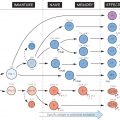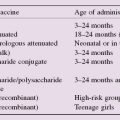Before any immune mechanism can go into action, there must be a recognition that something exists for it to act against. Normally this means foreign material such as a virus, bacterium or other infectious organism. This recognition is carried out by a series of recognition molecules or receptors. Some of these (upper part of figure) circulate freely in blood or body fluids, others are fixed to the membranes of various cells or reside inside the cell cytoplasm (lower part). In every case, some constituent of the foreign material must interact with the recognition molecule like a key fitting into the right lock. This initial act of recognition opens the door that leads eventually to a full immune response.
These receptors are quite different in the innate and the adaptive immune system. The innate system (left) possesses a limited number, known as pattern-recognition receptors (PRRs), which have been selected during evolution to recognize structures common to groups of disease-causing organisms (pathogen-associated molecular patterns, PAMPs); one example is the lipopolysaccharide (LPS) in some bacterial cell walls (for more details see Fig. 5). These PRRs act as the ‘early warning’ system of immunity, triggering a rapid inflammatory response (see Fig. 2) which precedes and is essential for a subsequent adaptive response. In contrast, the adaptive system has thousands of millions of different receptors on its B and T lymphocytes (right), each one exquisitely sensitive to one individual molecular structure. The responses triggered by these receptors offer more effective protection against infection, but are usually much slower to develop (see Figs 18–21).
Linking the two systems are the families of major histocompatibility complex (MHC) molecules (centre), specialized for ‘serving up’ foreign molecules to T lymphocytes. Another set of ‘linking’ receptors are those by which molecules such as antibody and complement become bound to cells, where they can themselves act as receptors.
Innate Immune System
Soluble Recognition Molecules
Complement
A complex set of serum proteins, some of which can be triggered by contact with bacterial surfaces (for details see Fig. 6). Once activated, complement can damage some cells and initiate inflammation. Some cells possess receptors for complement, which can assist the process of phagocytosis (see Fig. 9).
Mannose-Binding Lectin (MBL)
Stay updated, free articles. Join our Telegram channel

Full access? Get Clinical Tree





